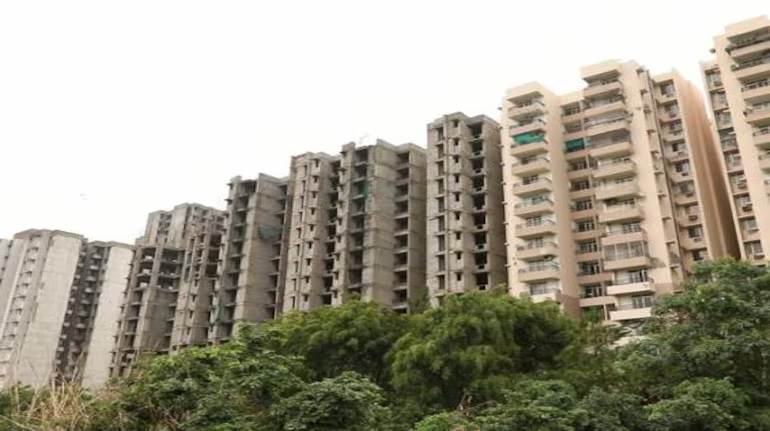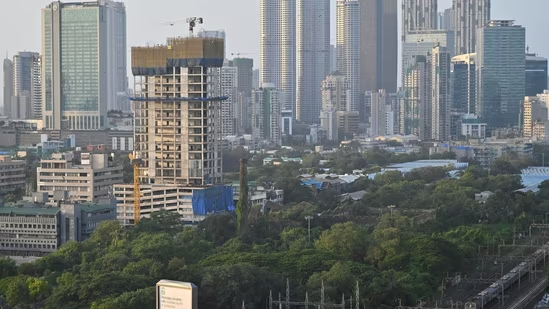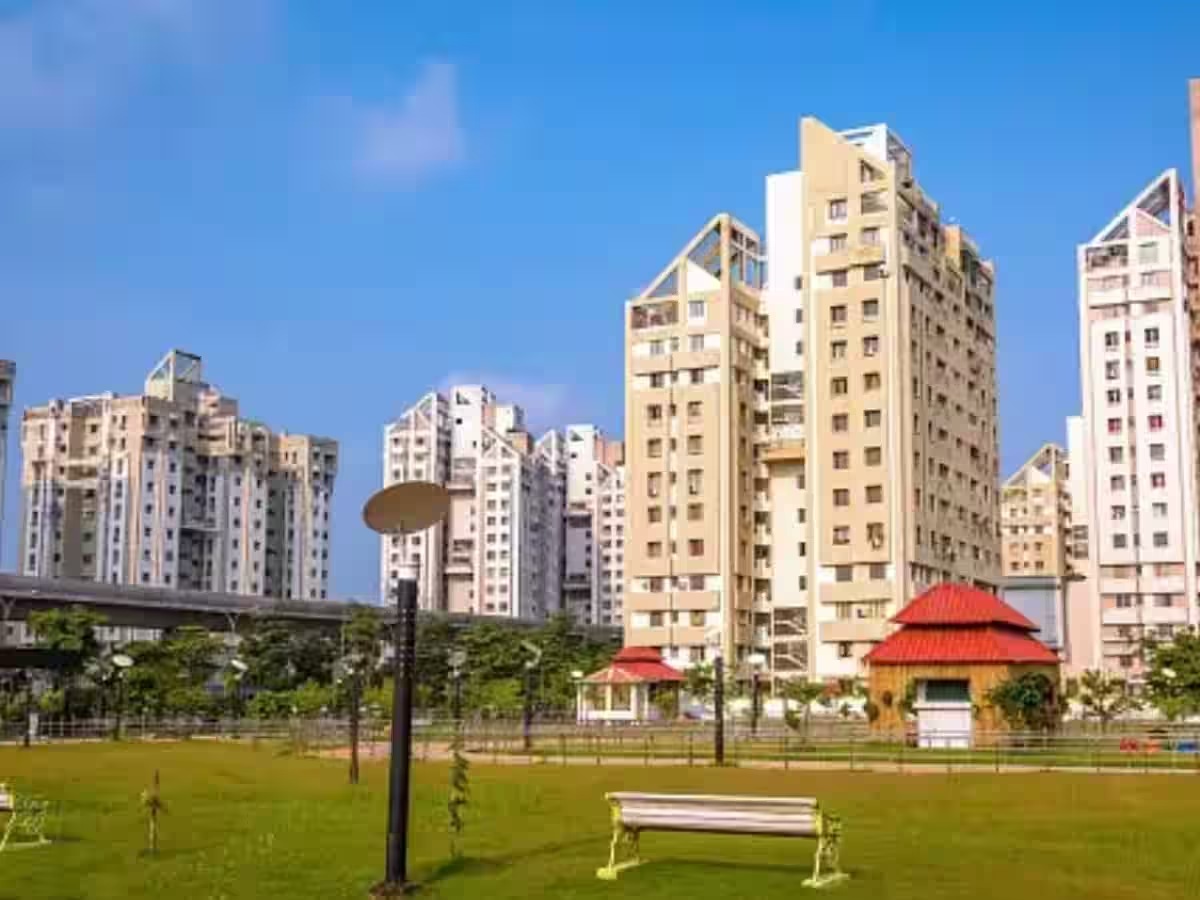Guest Column
Indian real estate: A review of 2013 and outlook for 2014




Economic activity picked up from declining growth in 2H-2013
Economic factors that influence office space demand broadly fall in the categories of domestic consumption, industrial production and/or exports, with each factor having strong inter-dependence.
While economic activity declined since the start of 2012, readings of 2H-2013 suggest early signals of revival in industrial activity and exports. However, since this growth is on a low base from last year, it may not yet provide concrete signals of an emerging new growth cycle. The recent surge in exports growth could be merely a consequence of the weakened rupee, which makes importing from India cheaper for foreign entities.
Additionally, there are still headwinds to growth in the form of inflation threat, global capital flow uncertainty and the upcoming 2014 general elections. Higher inflation against low economic growth rate has been a dilemma for policymakers.
Office market rental and capital value momentum reflects economic dichotomy
In 2013, the trend of subdued demand for office space continued from the previous year. Thus, rental value (RV) growth was slower than that observed in 2012 (with the exception of Mumbai, where growth was relatively faster). However, capital value (CV) growth was faster than rental value growth during 2013, resulting in a fall of market yields.
Over the last 10 quarters, market yields have fallen in the range of 4-6 basis points. The primary reason for faster growth of CV is the rising input costs, which forces developers to increase prices despite less-than-favourable market conditions. This trend was seen in all cities.
Polarisation of demand seen across sub-markets within cities
During the year, two kinds of polarisation in commercial space demand were witnessed across all cities. First, as office consolidation was pursued, front-end operations were separated from the backend – space for the latter relocated into cheaper suburban precincts, while operations of the former remained in CBD or SBD locations. Secondly, while vacancy rates have risen pan-India, this was largely due to increasing supply in the suburbs (where absorption was relatively weaker).
Key business districts where absorption was higher and supply was limited witnessed neutral or marginal drop in vacancy rate. This change in companies’ real estate strategy has provided distinct identity to each sub-market within a city, and will strongly influence rental and capital values going forward.
Vacancy rate uptick, although key business cities showed improvement
Vacancy rate for 2013 signs off at around 18.2%, rising from 17.4% as of end-2012. Hyderabad and Delhi-NCR were the biggest contributors in terms of vacancy levels. This was largely due to increased new supply as against a fall in absorption. On the other hand, the ‘heavyweight’ cities of Mumbai and Bangalore witnessed marginal fall in vacancy. Both these cities saw reduction in the growth of new stock supply, while absorption of office space recovered. Overall, pan-India supply rose by 10.4% y/y in 2013, whereas the fall in absorption was less severe (-1.1%y/y) as against the fall of over 26% seen last year.
2014: Outlook
Early signs of economic growth recovery, but headwinds prevail
Towards the close of 2013, the Indian economy has displayed a growth of 4.5% y/y. If we take into account the estimated growth in GDP for the full year FY2013-14 of close to 5.0% y/y, 2H-FY2014 should record a growth rate of over 5.0%, which is positive in the near-term. The recent state election results (giving clear mandates in almost all states), significant fall in trade deficit (owing to rise in exports) and partial recovery of the rupee have helped revive business sentiment to some extent.
However, as repeatedly highlighted by the RBI, inflation continues to remain a threat despite the index falling gradually in the interim months during the year. As labour wages are directly linked to inflation, any rise in generalised prices would mean further increases in the cost of construction.
Absolute cost of construction has already increased by 25-30% over the last four years across leading cities, as against a 20% rise in pan-India capital values. Also, the cost of finance has increased in the light of banks’ reluctance to fund what is currently perceived as a high-risk sector. Most private financial institutions have also switched from providing equity funding (thereby taking some risk against expectation of higher returns) to providing debt funding (usually at a high fixed interest rate).
Market sentiment expected to improve during 2H-2014
The lukewarm absorption of office spaces is likely to remain until uncertainty over some of the abovementioned headwinds dissipates. The US federal reserve’s decision on tapering (due early next year), the Indian general elections (due in 2Q2014), and the RBI policy direction (based on the inflation growth dynamics) are key factors to look out for in the coming six months.
However, during 2H-2014, businesses are likely to show greater confidence in terms of investing in their expansion plans. This would result in increased office space absorption. Overall, it is reasonable to expect better growth in rental and capital values in 2014 as against the current year. However, yields are likely to compress further as capital growth may continue to rise a bit faster than rentals.
Also, the current vacancy levels would rise marginally on the back of new stock completions.
Residential real estate 2013: A review
Lack of confidence reduced investor interest, but empowered end users
The year 2013 was a drag for the Indian economy with poor macroeconomic conditions. Slowing income growth, sustained weakness in the rupee, sky-rocketing inflation and high borrowing rates combined to make consumers vary of spending. This reflected visibly in the Indian consumer confidence index, which has been falling consistently over the last three quarters.
Housing absorption statistics the first three quarters of 2013 also reflect this trend in consumer sentiment – from a largely positive QoQ growth to largely negative growth as of 3Q13. Despite this, residential property prices continued to exhibit upward movement even as the weakening rupee steadily eroded purchasing power.
Over the last four years (from the trough of 2Q09 up to 3Q13), taking into account the period of economic slowdown, apartment prices have risen by over 50% on an average across India. As a result, absorption remained subdued during 2013 (until 3Q13), falling further from the already tepid levels observed during the same period last year.
This was particularly true of cities where new supply rose sharply. However, affordable markets such as Kolkata and a few emerging locations near city peripheries, witnessed better absorption rates. Preliminary data indicates that a subdued sentiment continued into the 2013 festive season (the initial few weeks of the fourth quarter) when developers typically sell around a third of their annual inventories.
Policies to enhance transparency
Notoriously non-transparent, the Indian real estate sector certainly needed a fresh infusion of progressive reforms to boost confidence amongst home buyers as well as investors. To this end, major reforms were initiated around mid-2013 in the form of Real Estate Regulatory (RER) Bill and the Land Acquisition, Resettlement & Rehabilitation (LARR) Bill. Schemes such as prelaunch (selling apartments without obtaining all necessary approvals) and 80:20 (20% booking advance and remaining 80% after possession) were targeted to ensure adherence to market best practices.
However, typical to the housing sector, no reform is without its unique drawbacks, flaws or limitations – and these were no different. Both the bills (RER & LARR) had clauses or bye-laws that threatened to further escalate prices in a market craving for absorption numbers. While the regulatory bill raised developers’ funding concerns by proposing to ban the practice of pre-launches, the land acquisition bill rendered the process of acquiring land costlier and more time-consuming.
Shift of bargaining power
2013 saw a decisive shift of bargaining power in favour of buyers. Towards mid-year, a significant fall in the rupee against the US dollar gave NRIs and foreign investors an opportunity to earn incremental returns of 10-15% merely on the exchange rate movement (the rupee has partially recovered since then). Further, developers’ willingness to lower prices by 10-15% gave serious local buyers a chance to get genuine bargains on their property purchases. Therefore, the market presented good windows of opportunity (albeit small ones) at fairly regular intervals.
The rise of the suburbs
Stock-weighted average prices across India rose by 10% y/y during the first three quarters of 2013. The growth in prices was clearly skewed in favour of suburban and newly emerging locations as opposed to established city sub-markets (barring a few exceptions). Markets such as Kolkata, which have traditionally catered to low and mid-segment buyers, witnessed sharp price rises. In this period, rental values across India increased by a relatively modest 8.0%.
Hyderabad proved to be an outlier, as capital values rose sharply owing to the changes in the State Government’s housing policy. In mid-2012, the Andhra Pradesh Government had enforced a policy making it mandatory to provide EWS housing in every project covering one acre or more. Few new projects were launched after this, until early 2013.
The policy was later revised to include only projects with five acres or more of land for mandatory inclusion of EWS housing. With this revision and a thinning of previous unsold inventory, more new projects were launched at higher price points.
2014: Outlook
Time to match demand with relevant supply
While the India’s gripping urbanisation growth story has been fascinating global investors so far, an underlying truth gradually emerged in 2013 – economic growth, the consumption story and property prices may not rise consistently, and there could be intermittent hurdles or growth risks. The presently cautious market sentiment is likely to continue, as headwinds to growth will prevail at least until the first half of 2014.
However, the second half is likely to witness gradual revival in absorption. Residential real estate capital values will increase in a subdued range of 10-12% y/y pan-India for the whole year.
Affordability will drive growth in 2014
An emerging economy is never short of opportunities, and it is time that the Indian residential real estate industry realises where the opportunity lies. To date, the shortage of homes in India stands at around 19 million units, and 95% of this housing shortage is in the Economically Weaker Section (EWS) and Low Income Group (LIG) categories.
In India, housing for EWS is defined by the Technical Group on Estimation of Housing Shortage as having a carpet area of 21-27 square meters; LIG housing includes units of 28-60 square meter carpet area. By Government definition, EWS housing falls in the range of INR 4-10 lakhs. This means that development of affordable housing will have to penetrate into the deeper suburbs of our cities, where such price points are feasible.
The TATA Shubh Griha project (popularly known as Nano homes; completed in 2011) in Boisar near Mumbai was a splendid example of successful identification and auctioning of such opportunities. The project had 1,300 units, which received applications from 3,500 households. A recommendation to the Government by the technical group to incentivise such projects by subsidised land, tax rebates, grants per supply of dwellings, etc. could help developers in improving the feasibility of such projects.
Redevelopment activity to increase
With scarce availability of land in the urban agglomeration, redevelopment will emerge as another growth driver in a scenario the cost-and-time-intensive complexities with regards to land acquisition brought forth by the LARR 2013 amendments. Indian cities present an exceptional opportunity for developers in this respect – as per the latest available census data on households, only 50% of the residential units are in good condition, while the remaining are either merely liveable or in dilapidated condition.
Rise in bank penetration as demand driver
The housing mortgage market in India is currently low at 9% (mortgage-to-GDP ratio) when compared to other emerging Asian economies such as Malaysia (31%), Thailand (19%) and China (17%). In developed economies, this ratio averages around 60% of the GDP, with countries such as Switzerland, Netherland and Denmark close to the 100% level.
Deeper penetration of banks and innovative financial products would help the mortgage market to expand in India. As per RBI data, even in the highly progressive state of Maharashtra, bank offices are largely concentrated around metro cities (40% of total ~10,000 bank branches in the state). With the expected release of 12 new banking licences by the central bank during early 2014, we foresee deeper penetration of the banking sector.
In fact, many banks are already aggressively enhancing their rural penetration to stay ahead of the anticipated rise in competition. We believe housing sector will benefit a lot from this development.
Policy-induced growth opportunities
Policy paralysis has been one of the primary reasons for the slowdown in India over the last few years. The bad press which this garnered for the Indian economy began catalysing reforms on various fronts. Policy-based efforts are already under way to make the residential real estate sector more transparent.
These efforts will continue in 2014, as well. India’s capital market regulator has reiterated the importance of Real Estate Investment Trusts (REITs) as a tool to attract large pools of money into the real estate sector at relatively cheaper cost. At present, participation in real estate growth is largely restricted to NRIs, HNIs and institutional investors. REITs could open up opportunities for small investors to diversify their asset structure.
Since REITs are adept at searching for income-generating properties, it could result in extracting new growth opportunities through rental housing projects, affordable housing projects and senior citizen housing projects which will increase the depth of the industry. These factors can help the Indian real estate sector sustain its attractiveness.
Demand (and price growth) likely to revive in 2h 2014
Consumer confidence will remain subdued during the first two quarters of 2014, owing to uncertainties surrounding the general elections and macroeconomic condition (both global and domestic). However, post the elections, fence-sitting investors are likely to become active. The increase in absorption of residential units will help reduce the currently large inventory holdings of developers.
A recently observed trend of a gradual fall in supply in response to the subdued demand will only reverse with a lag, helping prices to strengthen gradually in the second half. Therefore, pan-India residential real estate prices are likely to grow at 10-12% y/y, factoring in input-cost inflation and a gradual pick-up in demand. The risk to this growth estimate is largely on the upside, considering that post-elections, a great deal of uncertainty which currently exists will be put to rest.
Retail real estate 2013: A review
Macroeconomic scenario – Economic pain reflected in spending restrain
The GDP growth for the financial year 2012-13 stood at 5.0% y/y as against 8.0% average growth over the last five years until FY2011-12. The first quarter of FY2013-14 provided no respite – growth fell further to 4.4% y/y.
The services sector, which is the primary driver of demand for grade A office and retail space in India, has witnessed a consistent slowdown and is yet to show concrete signs of revival. Growth of the FIRE sector (Financial, Insurance, Real Estate & Services), which stood in double-digits over the last five years, came down to 8.5% during the previous financial year and currently remains at that level.
The poor economic environment took its toll on the confidence of domestic households to loosen their purse-strings and start spending. Growth in consumption spending, which stood on at an average of over 8.0% during the five-year period until FY2011-12, fell sharply to 3.9% y/y as of the last financial year (FY2013) and 1.6% during Q1-FY14. Further, steep rises in the price of food items (vegetables and fruits) necessitated increased expenditure on basic and essential goods.
The growth of the retail sector, which forms part of the Trade, Hotels & Transport component of India’s GDP, stood at 9.7% y/y on average during the five years until FY2011-12. Last year (FY2013) it fell to 6.4% y/y. Q1-FY14 performance was even worse, recording growth of a mere 3.9% y/y.
Performance of retailers – Indian consumers moving up the value chain?
When economic growth and private consumption suffer, retailers are obviously impacted. For the 10 prominent national retailers listed on the Bombay Stock Exchange, quarterly net profits for the first two quarters (ending June ‘13 and September ‘13) of the current financial year reflected weakness. In addition to the economic slowdown, AT Kearney’s GRDI report for 2013 also highlighted the difficulty that Indian retailers had to face during the last few quarters. The report states – ‘High operating costs, low bargaining power with vendors, and heavy discounting to improve sales have affected profits and expansion plans. Real estate cost and space availability also remain important issues.
However, a few retailers did exhibit marginal growth even in these difficult times – these included Shoppers Stop, Trent Retail and Indian Terrain. We believe that these retailers benefited from their premium brand positioning, which gave them an edge over brands that primarily target the valuebased segments.
This trend is further reflected in the performance of international retailers who have recently forayed into India. Brands such as Zara, Marks & Spencers, Benetton and Tommy Hilfiger posted a healthy jump in their year-on-year revenues, and therefore have ambitious expansion plans for India. These international players have bucked the general trend by offering stylish designs at prices that were
reasonable to Indian consumers. These four global brands collectively achieved sales that equaled the apparel sales of established department store chains such as Shoppers Stop and Lifestyle International.
Regulatory environment: Policymakers coming to terms with market reality
After several years of clamour and hesitation, the Indian Government fully opened up FDI investment in single-brand retailing towards mid-2012. Large single-brand retailers such as Roberto Cavalli, Christian Louboutin, Starbucks, Dunkin Donuts, Armani Junior, etc. entered in the subsequent months. IKEA, a large furniture chain, is also finalising its India entry strategies, with plans to invest around INR 10,500 crore.
Later during the same year, the Government also raised the FDI limit in the ‘politically contentious’ multi-brand retailing segment from nil to 51%, albeit with certain pre-conditions. While many had believed that this move would incite international players such as Wal-Mart and Carrefour to accelerate their entries into the Indian market, none of those retailers have submitted their investment
plans yet.
After analysing the FDI pre-conditions, global retailers voiced their concerns over some of them which they perceived as excessively rigid:
• Minimum $100 million investments
• Maximum 51% stake by foreign retailer
• 5-year window to achieve 30% sourcing from SME sector
• 50% of the FDI investment to be channelled into creating back-end infrastructure
These pre-conditions were perceived as too difficult to execute in tandem. For instance, the first two conditions cumulatively require the joint venturing partners to invest more than Rs 1000 crore. Since food and apparel is the highest-selling segment, retailers would be inclined towards investing in it despite the high competition in this segment. Other retail segments may be too small to accommodate such magnitude of investment.
Realising that these pre-conditions created genuine difficulties in execution, the Indian Government announced measures to relax these norms in August 2013. Therefore, on the policy front, 2013 was a year of realisation and negotiation with foreign retailers.
Pan-India retail performance: Higher absorption in tier-II cities
In an otherwise somnolent market scenario, Chennai’s performance was notable. This city witnessed the strongest retail space absorption during the first three quarters. As a consequence, vacancy dropped by 6.0%. Paradoxically, overall rentals and capital values in Chennai slipped the most, largely owing to large influx of supply in the suburban locations where prices are cheaper.
Kolkata and Mumbai came in as the second and third-best performing markets, recording relatively strong absorption figures. Unlike in Chennai, the increased demand in these two markets was not supported by strong supply. As a result, overall rentals and capital values increased in the range of 5- 10% y/y.
Organised retail penetration: Under-penetration remains the biggest opportunity
Currently, organised retailing accounts for only around 7% of India’s total retail market size, while the remaining is constituted of the unorganised sector. When comparing this ratio with other emerging nations such as Brazil (35%), Russia (30%) and China (20-25%), organised retailing in India clearly appears under-penetrated. In most of the developed markets, organised retail accounts for anywhere between 66% (in Japan) and 85% (in the US).
The fact that India, along with China, presents one of the best population characteristics in terms of spending potential makes it an attractive market for global retailers. Increased urbanisation in the Tier-II and Tier-III cities, along with a steep rise in rural income levels, presents a big opportunity for retailers, coupled with the benefit of low real estate costs in those cities compared to the expensive
Tier-I cities.
Year 2013 has once again highlighted that retailers cannot afford to ignore India. Nevertheless, obstacles to faster growth – such as unaffordable real estate rates, complex taxation and FDI policies, intense price competition from the unorganised sector and on-going economic slackness – continue to be challenges.
2014: Outlook
Macroeconomic scenario: Sluggish, but demography can trigger growth
Macroeconomic fundamentals are unlikely to change during the first half of year 2014. In the second half, sentiments will be driven by election results, the state of inflation and global growth outlook.
On the domestic front, high inflation, exchange rate volatility and high current account deficit have been acting as a drag. Considering good monsoons production which will hit the markets soon, inflation will gradually subside beginning 2014. However, there are external factors at play as far as capital flows (essential to fund deficit in the current account) and rupee volatility are concerned. These risk factors could deter investments from foreign multinationals.
However, international retailers realise that the best time to enter India is when real estate prices (one of the major concerns for retailers) are stable. The potential resolution of various policy issues and the sustained attractiveness of India’s consuming class (favourable demography and rising incomes) will help boost the interest of global retailers in 2014.
Nevertheless, uncertainty remains with regard to general elections and the subsequent fate of large investments by retailers. Our recently released report ‘India’s Retail Luxury Quotient’ affirms that as of 2014, India’s retail sector has the potential to reach around Rs 25 trillion. As per the same report, the size of retail market is around Rs 19.2 trillion (as of 2012), accounting for 22% of India’s GDP.
Considerable supply: Coupled with stable real estate, a good opportunity
Close to 900,000 square meters of additional retail space supply is going to hit the pipeline in 2014, as against the 590,000 square meters in 2013. Cities such as Delhi, Hyderabad and Bangalore will witness good supply of retail space, largely around the expanding city peripheries. Due to the limited supply of modern retail spaces in those areas, this new supply will meet with reasonably favourable pre-commitments.
However, rental and capital values will remain stable in most cities on account of the on-going slowdown in the real estate sector. Viewed cumulatively, these factors will prove to be incentives for retailers to enter the market or expand their business.
Organised retail penetration (ORP): To increase in various categories
As a retail category, the F&B segment accounts for the highest share (~70%) of the total retail market size. However, the organised sector’s share in this category – a high-volume / low-margin segment – currently stands at only 2-3%. As and when foreign investments happen in the Indian retail sector, the F&B segment is likely receive the lion’s share. This category has the potential to digest heavy investments considering existing weakness in back-end infrastructure in India.
On the other hand, ORP in the relatively high-margin categories such as clothing (~20%), footwear (~17%) and beauty & personal care (25-30%) will be higher in 2014, as modern retailers are looking to increase their foothold in these segments given the rising lifestyle aspirations of Indian consumers.
The increased foothold of the organised sector will create demand for additional mall space.
Investment outlook- 2014 unlikely to prove pivotal for FDI
Year 2014 may not be significant in terms of foreign direct investments into the retail sector. In the normal course, once the investment proposals are approved at the Centre and State levels, a new entrant large-scale retailer require around 18 months to procure the requisite mall space, create backend infrastructure and set up procurement contracts. Also, for the partnering Indian retailer, existing operations will have to be restructured in order to meet the FDI policy conditions.
Despite the relaxation of certain criteria in the FDI policy in August 2013, foreign retailers such as Walmart, Tesco and Carrefour are unlikely to enter the hypermarket business in India before the 2014 elections because of:
• Trepidations about possible policy reversals with regards to opening up of multi-brand retailing to foreign participation (considering that there has been significant political pressure against it in the past
• Confusion about whether the mandatory back-end infrastructure investment need to be in green-field, brown-field or otherwise.
• Strong resistance by the international retailers on the 30% sourcing from SMEs criterion, despite some relaxation provided by Government recently.
For instance, Walmart claims that it can at best stretch up to 20% but not beyond.
Another reason why 2014 may not prove to be a watershed year for retail FDI – while it is mandatory for international retailers to be in joint venture with Indian retailers, finding a suitable Indian partner is difficult. Most Indian retailers, including the big ones, have witnessed falling profits and rising debts.
They are largely in consolidation rather than expansion mode.
(The writer is Chairman & Country Head, Jones Lang LaSalle India)
-



 News3 weeks ago
News3 weeks agoKW Delhi 6 Mall Onboards New Brands
-



 News3 weeks ago
News3 weeks agoManasum Senior Living Launches IKIGAI GOA, A Senior Living Community in North Goa, in collaboration with Prescon Homes
-



 News2 weeks ago
News2 weeks agoGodrej Properties Sells Rs 3k cr+ Homes of Godrej Zenith, Gurugram, within 3 days
-



 News3 weeks ago
News3 weeks agoBridging India Divide: Top 5 Tier- 2 Cities to Focus On
-



 News3 weeks ago
News3 weeks agoCommercial Realty Gets Tech Savvy: Fast Construction, Enhanced Convenience
-



 News3 weeks ago
News3 weeks agoMultipoint Connection – A Definite Boon
-





 News2 weeks ago
News2 weeks agoRBI’s Status Quo on Key Policy Rates to Help Maintain the Real Estate Growth Momentum, Say Industry Stalwarts
-



 News3 weeks ago
News3 weeks agoSacred Cities See a Retail Boom as Spiritual Tourism Surge: CBRE Report
























